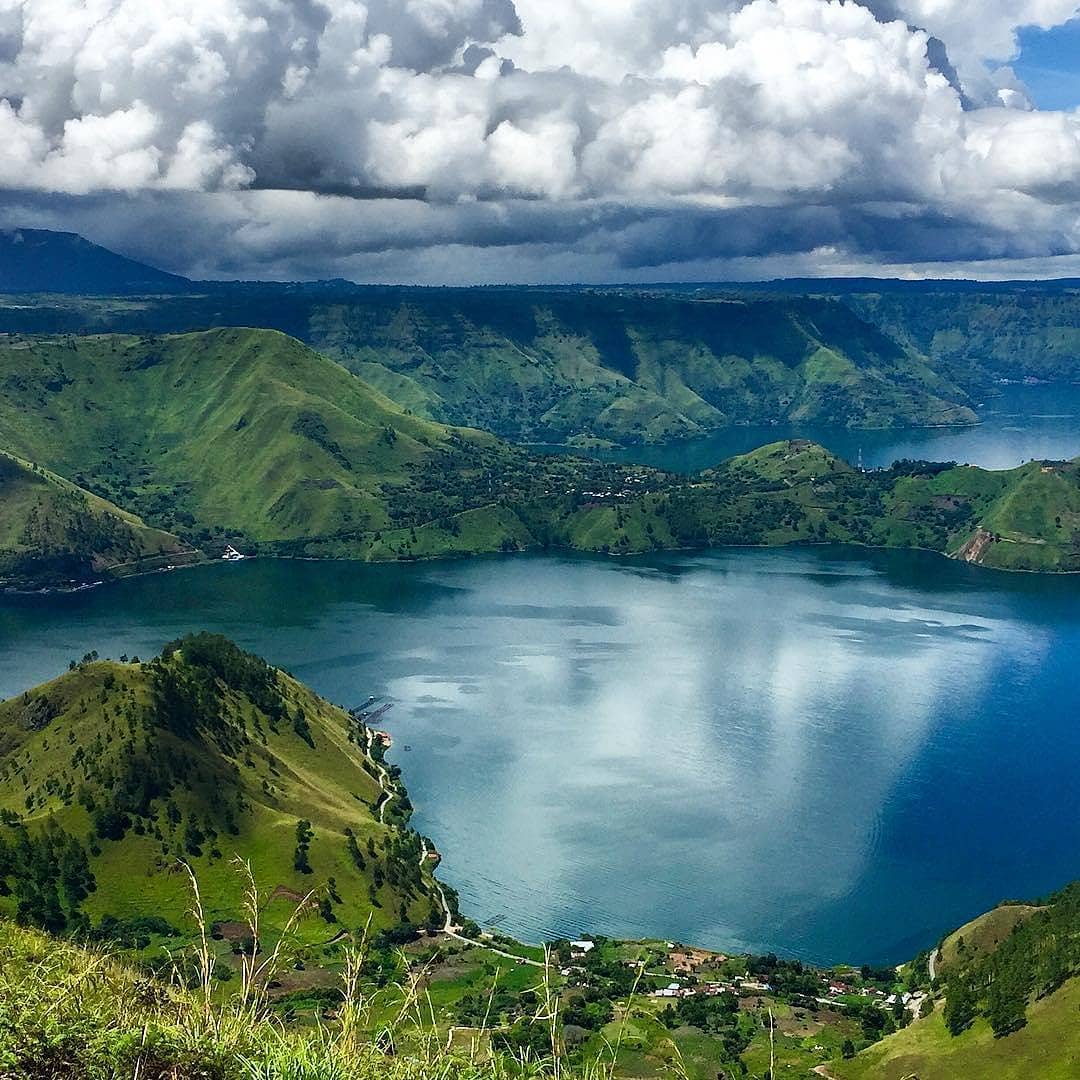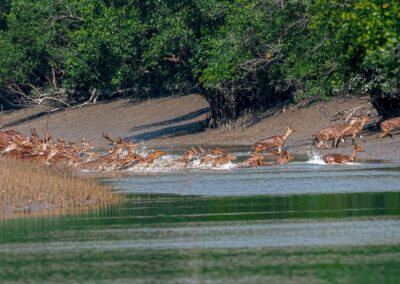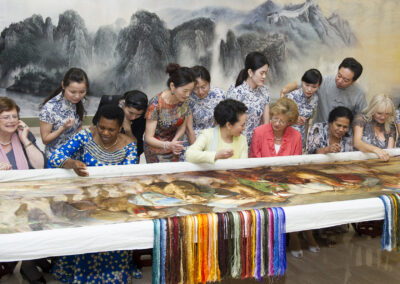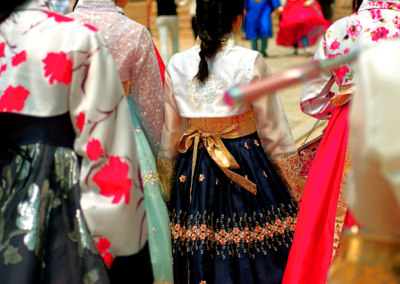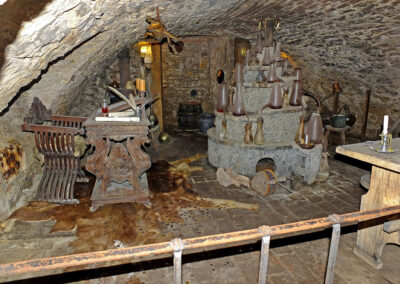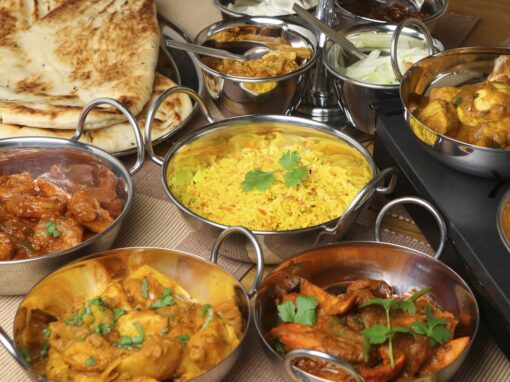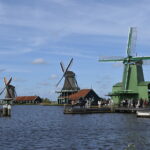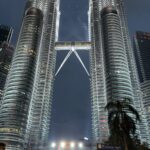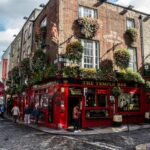Sumatra, Indonesia’s largest island and the sixth-largest island in the world, is a melting pot of cultures that contribute to Indonesia’s diverse cultural tapestry.
It is home to a wide range of peoples and tribes who help make up its 59 million plus population. The island spans a northwest-southeast axis from Banda Aceh in the north to Bandar Lampung in the south.
Ernie Johan Manurung was born and grew up in the North Sumatra province, located towards the north of the island. It is the most populated Sumatran province in Indonesia. She moved around the province a lot while growing up before departing the island to pursue her career as an English teacher.
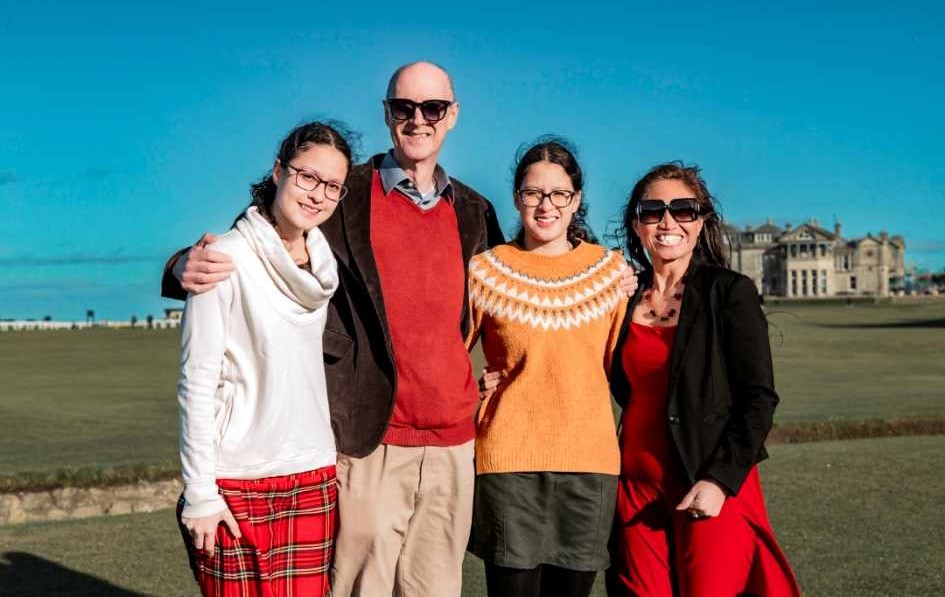
Ernie with her family
She has since lived in a remarkable array of different countries including Syria, Taiwan, Turkey and Thailand. She now lives in Scotland with her husband and two daughters.
She took the time to tell me all about her cultural background and upbringing in the Batak Toba tribe, a people in North Sumatra primarily concentrated in the central highlands region around Lake Toba.
“I was born near Lake Toba. This lake was created by a pre-historical tectonic eruption. I think the deepest part is 500m deep. In the middle of it there is an island. It was often visited by the Dutch (who colonised Indonesia) and it is quite a beautiful place.”
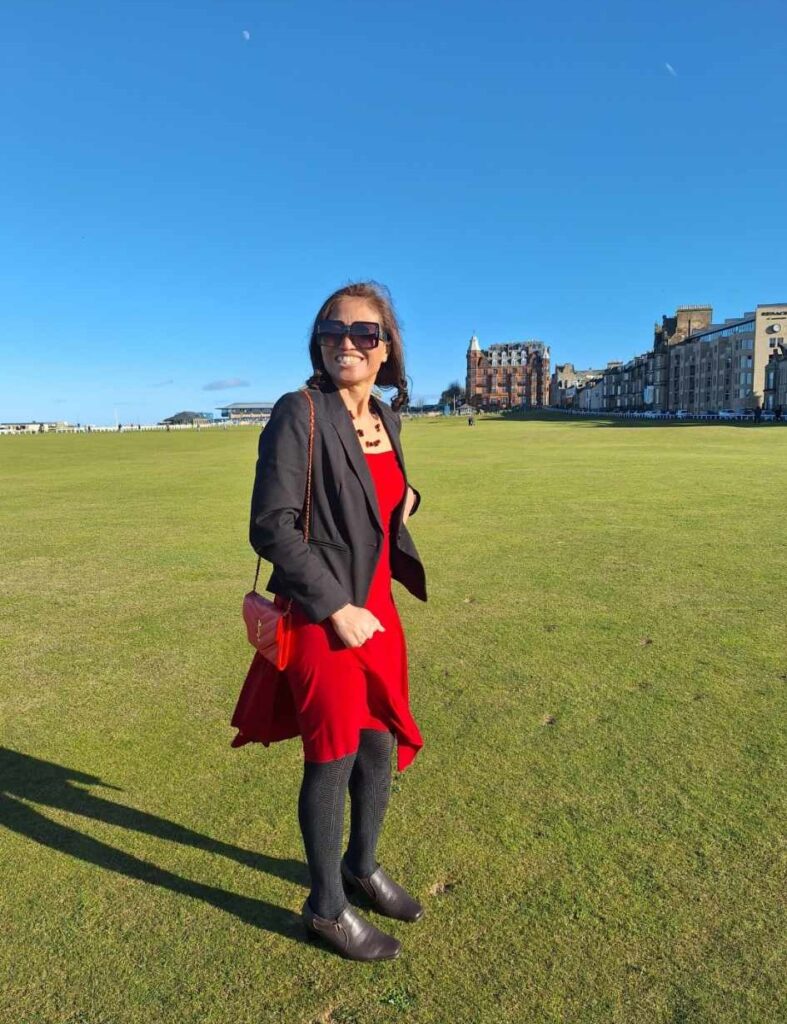
Ernie was born and grew up in North Sumatra but now lives in Scotland
Lake Toba is a large natural lake in North Sumatra and occupies the caldera of a supervolcano. A supervolcano is defined as a volcano that has had an eruption with a Volcanic Explosivity Index of 8, the largest value on the index.
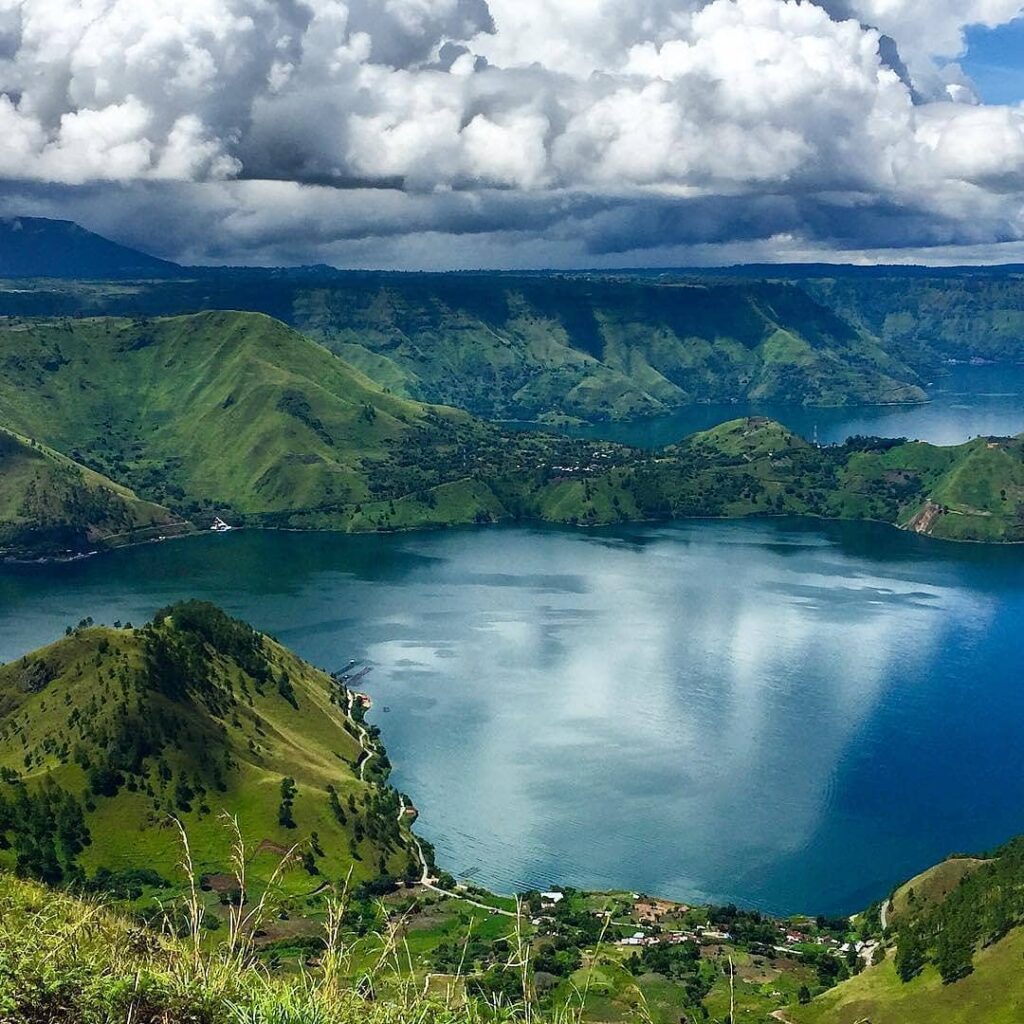
Lake Toba is the largest lake in Indonesia that occupies the caldera of a supervolcano (Google Creative Commons image)
It is the largest lake in Indonesia and the largest volcanic lake in the world. The supervolcanic eruption is estimated to have occurred 74,000 years ago. It is the largest-known explosive eruption on Earth in the last 25 million years.
“Indonesia has so many tribes and each tribe has its own culture. I am from Batak Toba. My tribe is very different to tribes from Java (Indonesian island situated across the narrow Sunda Strait to the southeast)” Ernie tells me.
“We wear ulos, a type of sling. These ulos have different patterns. We wear them to weddings and in funerals the colours would be black. Each tribe has its own traditions and traditional clothing. You will see the culture when you go to the tribes’ events.
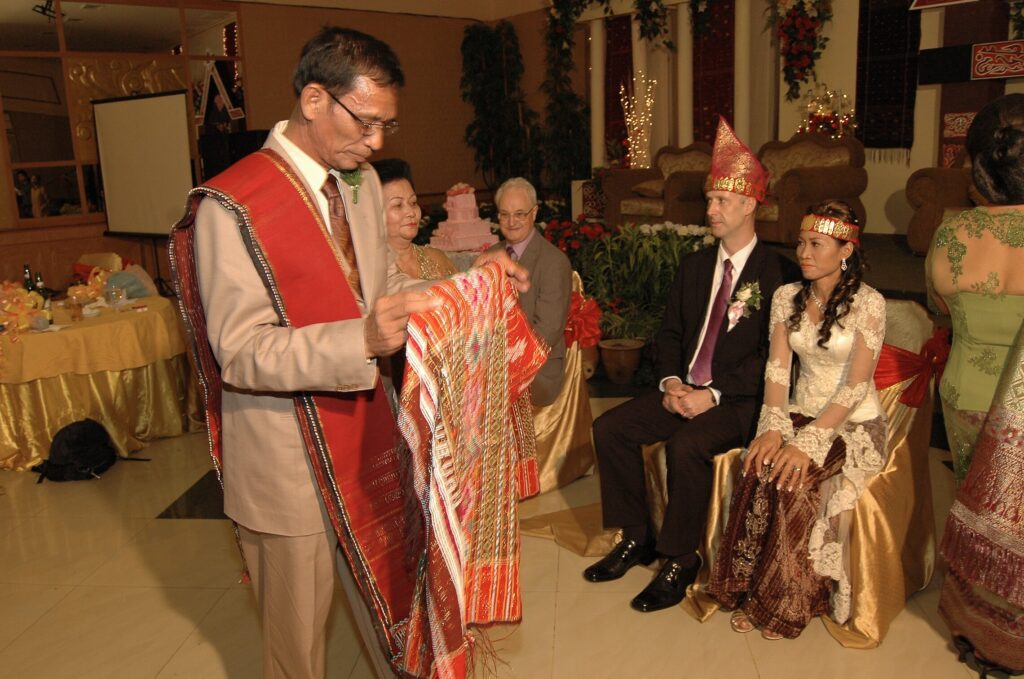
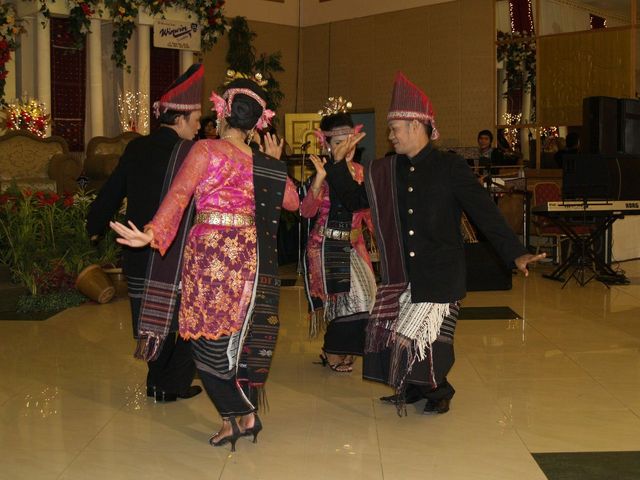
Batak dancing at Ernie’s wedding
“For funerals, in my tribe, when an older person dies, there is a hierarchy of death (which dictates how long the mourning and celebrations go on for). There are parties with Batak dancing, Batak music. There are ceremonies and there will be dancing around the coffin, music, some food later on. One side of the family will bring ulos while the other side of the family will bring food, rice and goldfish.”
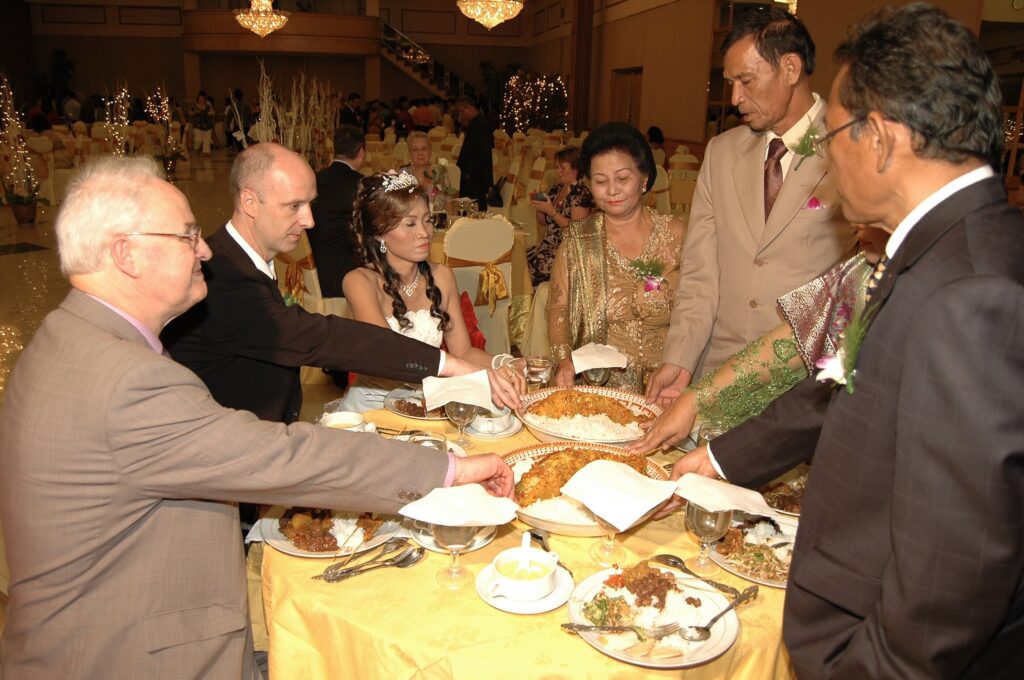
Goldfish being presented during Ernie and her husband’s wedding
Of the food in Indonesia, Ernie says: “We eat rice in the morning for breakfast, we eat rice for lunch and rice in the evening. There is a bigger portion for lunch and dinner. Typical Indonesian food would be rice, mixed vegetables, chicken and noodles.”
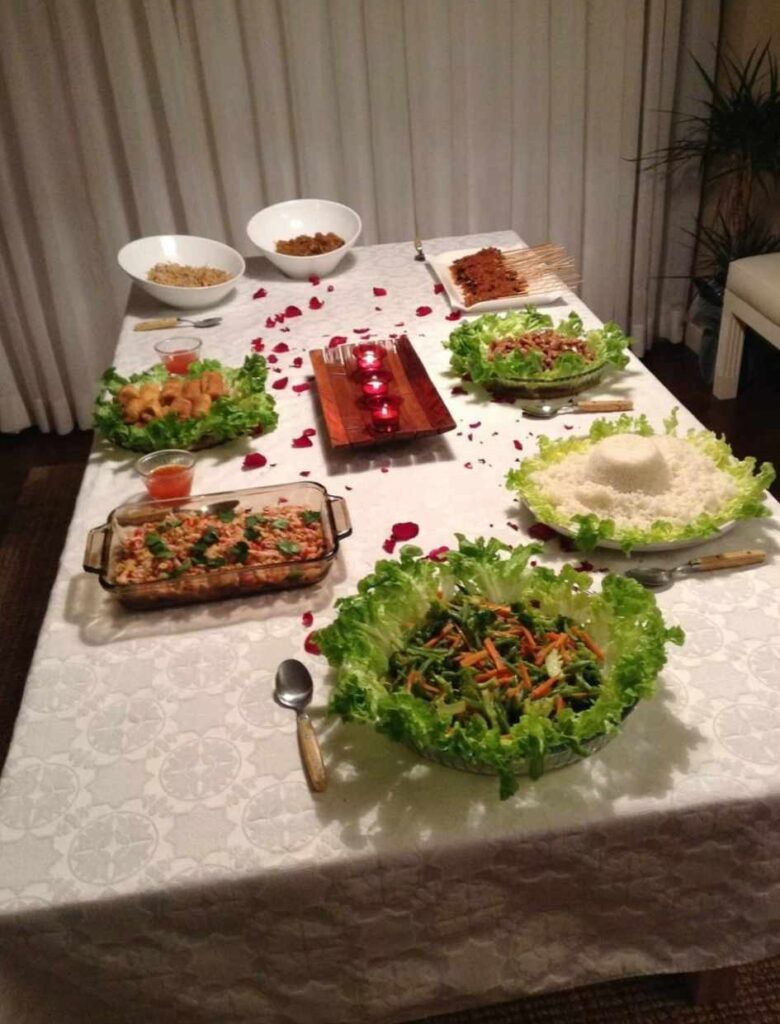
North Sumatran cuisine includes lots of rice, noodles, meat and mixed vegetables
One of the fascinating aspects of Batak culture is the existence and importance of clans.
“We have clans” she tells me. “My clan is called Manurung. I got that name because my Dad is a Manurung. We are not allowed to marry someone from the same clan. I met a Manurung in Malaysia and I would address him as like an uncle.
“When you meet another Manurung, you feel biologically related even when you are not.” Ernie went to go and live with her grandmother (not biological) to go and study. “Typically, parents in Indonesia would be happy to send their children to their relatives to go to a better school.”
Sumatra, as the largest Indonesia island, incorporates lots of cultures and traditions. Banda Aceh, located on the northern tip of the island, is known for its Shari ‘a law. The vast majority of inhabitants on the island are Muslim with Christians making up only around 10% of the population.
As for things to do and see in Sumatra, Ernie has many suggestions for right across the island. “Sumatra, in size, is very big. North Sumatra is good to explore and West Sumatra is where Padang is. They have a very interesting culture there and it is not patriarchal. Padang food is well-known all over Indonesia. You can find Padang restaurants everywhere you go in Indonesia.
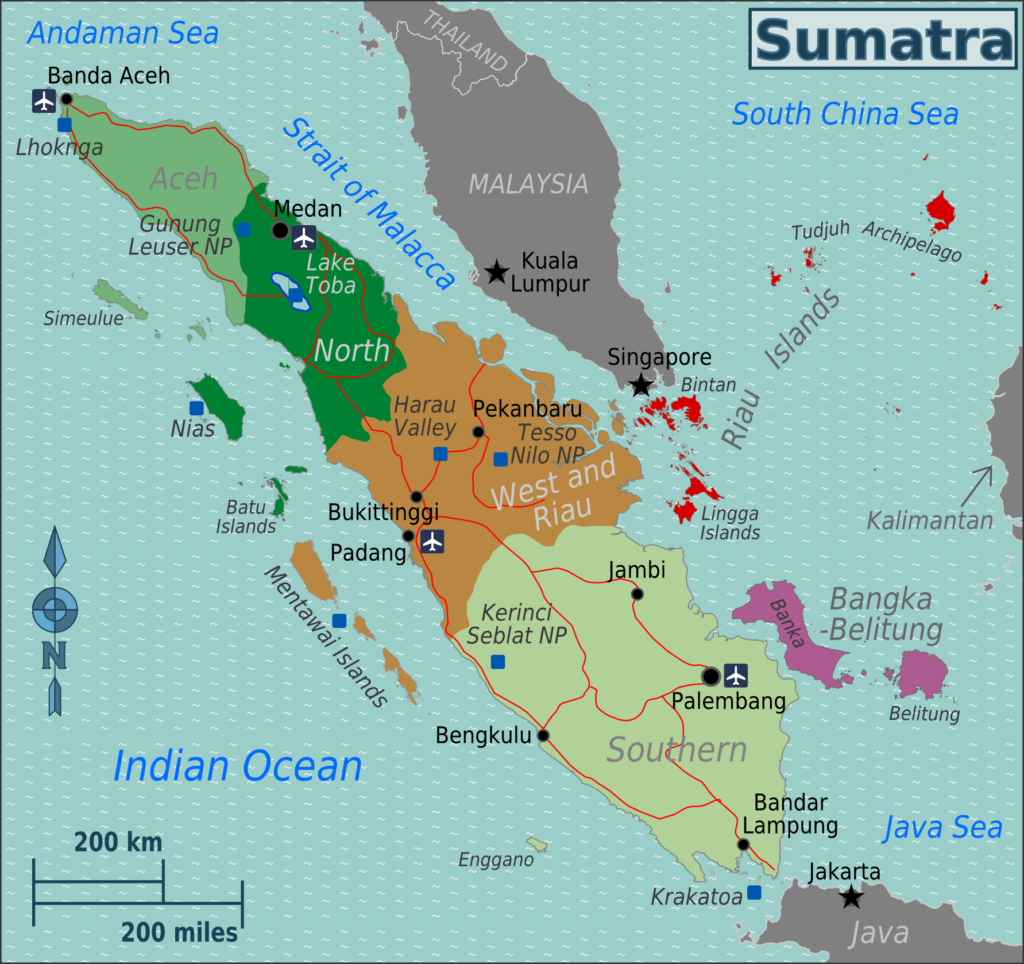
Map of Sumatra (Wikimedia Commons)
“When I travelled in Sumatra, we travelled on the east coast. There are small islands around Sumatra and one is called Nias. It is very good for surfing and the waves are very, very big. It is very famous for surfers.
“Near Bukittinggi in West Sumatra, there is an island called Mentawai that is a nice island, not so touristy if you like quiet, beautiful beaches. On the east coast, there is an island called Batam (in the Riau Islands) which is only 40 minutes from Singapore by boat. You can take a boat or drive to Bintan.
“In Lampung (province on the southern tip of the island) you can see elephant conservation”. The equator crosses the island at its centre in the West Sumatra and Riau provinces. Therefore, the climate on the island is tropical, humid and hot. Tropical rainforest once dominated the landscape but it has suffered from the effects of deforestation in the past 35 years.
Indonesia is synonymous with its orangutans and Ernie tells me that there have been efforts to boost populations in her home province. “In North Sumatra we are trying to help the orangutans because the population is going down and down. In North Sumatra there is a national conservation for orangutans. The government and conservationists from the UK and US are helping to educate the local people.
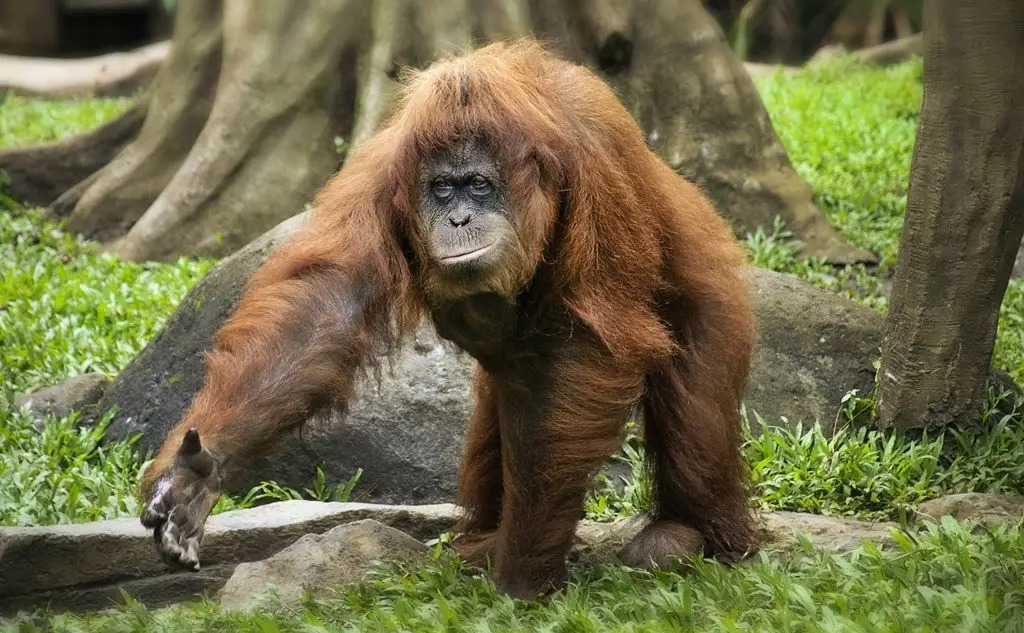
Orangutan in Sumatra (Google Creative Commons image)
“There is a place called Bukit Lawang where the conservation is. You can still go and see the orangutans in nature. Now the orangutans are deeper into the forest and people have to hike two or three hours to see them. The orangutans are safer here nowadays.”
The capital and largest city of Sumatra is Medan which is home to a sizeable chunk of North Sumatra’s 15 million plus population.
To enjoy a cultural travel trip to Sumatra, learning a bit of Indonesian can help create a more authentic experience.
“Indonesian is the national language. I can speak my tribe language and Indonesian so when I was a child, I was already bilingual”, Ernie explains to me. “Indonesian is quite a young language and more modern. If you now want to stay in Indonesia as an expat, you have to learn the language. I recommend that to experience the culture, try to make connections with the locals.”
This all makes Sumatra a great opportunity to experience many of the cultures and traditions which permeate Indonesia’s gigantic archipelago.


